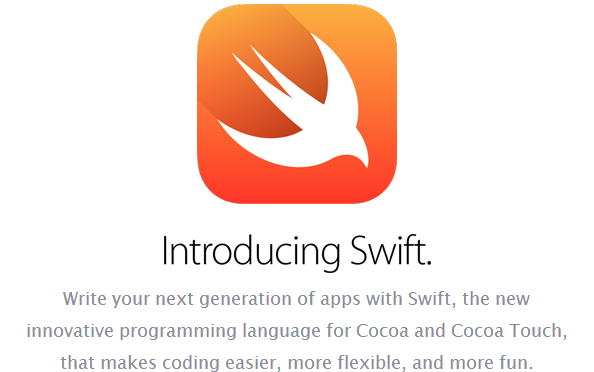注:本文参考苹果官方文档,讲解swift2.0语言的入门知识,使用IDE为Xcode7.2
- 接口、扩展
使用protocol来声明一个接口。
类、枚举和结构体都可以实现接口。
大家注意下,类的方法不用再声明关键词mutating,而结构体是需要mutating的
protocol ExampleProtocol {
var simpleDescription: String { get }
mutating func adjust() //mutating关键词,允许内部方法修改内部值。因为是接口,所以不用编写方法体
} 类、枚举和结构体都可以实现接口。
class SimpleClass: ExampleProtocol {
var simpleDescription: String = "A very simple class."
var anotherProperty: Int = 69105
func adjust() {
simpleDescription += " Now 100% adjusted."
}
}
var a = SimpleClass()
a.adjust()
let aDescription = a.simpleDescription
struct SimpleStructure: ExampleProtocol {
var simpleDescription: String = "A simple structure"
mutating func adjust() {
simpleDescription += " (adjusted)"
}
}
var b = SimpleStructure()
b.adjust()
let bDescription = b.simpleDescription
练习:写一个实现这个接口的枚举。
使用
extension
来为现有的类扩展功能,比如添加一个计算属性的方法。
你可以使用扩展来给任意类型添加接口协议,甚至是从外部库或框架中导入的类型。
extension Int: ExampleProtocol { //扩展Int类
var simpleDescription: String { //扩展一个属性
return "The number \(self)"
}
mutating func adjust() { //扩展一个方法
self += 42
}
}
7.simpleDescription 练习 :给Double类型写一个扩展,添加absoluteValue功能。
大家可以像使用其他命名类型一样使用接口名。如创建一个有不同类型但是都实现一个接口的对象集合。
当你处理类型是接口的值时,接口外定义的方法不可用。
let protocolValue: ExampleProtocol = a
protocolValue.simpleDescription
// protocolValue.anotherProperty // Uncomment to see the error
即使protocolValue变量运行时的类型是simpleClass,编译器会把它的类型当做ExampleProtocol。这表示你不能调用类在它实现的接口之外实现的方法或者属性。
- 泛型
在尖括号里写一个名字来创建一个泛型函数或类型。
enum ItemType {
case item
}
func arrays<ItemType>(item: ItemType, times: Int)->[ItemType]{
var result = [ItemType]()
for _ in 1...times {
result.append(item)
}
return result
}
arrays(ItemType.item, times:4)也可以创建泛型的类、枚举和结构体。如下,泛型的枚举
// Reimplement the Swift standard library's optional type
enum OptionalValue<T> {
case None
case Some(T)
}
var possibleInteger: OptionalValue<Int> = .None
possibleInteger = .Some(100)
例如,要限定实现一个协议的类型,需要限定两个类型要相同,
或者限定一个类必须有一个特定的父类。
以下是官方的样例代码,有兴趣的可以把他吃透
func anyCommonElements <T, U where T: Sequence, U: Sequence, T.GeneratorType.Element: Equatable, T.GeneratorType.Element == U.GeneratorType.Element> (lhs: T, rhs: U) -> Bool {
for lhsItem in lhs {
for rhsItem in rhs {
if lhsItem == rhsItem {
return true
}
}
}
return false
}
anyCommonElements([1, 2, 3], [3])
练习
:修改anyCommonElements函数来创建一个函数,返回一个数组,内容是两个序列的共有元素。
为了简单形象,你其实可以忽略where,
只在冒号后面写接口或者类名。<T: Equatable>和<T where T: Equatable>是等价的。
P.S.这是swift入门系列的终结篇,春节后继续撰写新的教程,
大家可以自己设计一些小的实战,把这些基础编程都应用上去,加深理解和吸收
祝大家春节快乐,猴年吉祥
























 被折叠的 条评论
为什么被折叠?
被折叠的 条评论
为什么被折叠?








